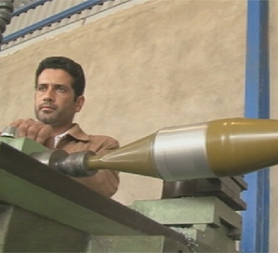Libya: life in Misrata amid civil war
Chief Correspondent Alex Thomson travels through the besieged rebel-held city of Misrata to witness the strange semblance of normal life – amid the shattering calm of sudden heavy bombardment.
Nobody is starving in Misrata. The bakery’s working day begins early preparing bread as usual – although outside it is a two hour wait for a strict rationing of loaves.
The traffic moves smoothly enough through areas relatively safe from shelling, but there are rebel check points every few hundreds yards.
You can even get as far as the harbour if you want – but at the moment you cannot get in amid fears of incoming shells and mines in the sea laid by Gaddafi’s forces.
Up at the harbour master’s office perched on a dusty hill you can see the shimmering Mediterranean and a ghost-like empty harbour.
Beyond the horizon, 12 miles out at anchor, lies the Red Star ferry on charter to the International Organisation for Migration. Her 16 hour voyage from Benghazi to Misrata now an odyssey several days long as she waits offshore for notice that it is safe to dock.
Libya Special Report: Click here for the latest new and analysis
NATO has apprehended Colonel Gaddafi’s forces laying sea mines around the port. The Colonel said on national TV two nights ago that any vessel entering or leaving this port will be a target.
At the port await hundreds of migrant workers living in terrible conditions in the heat and dust, caught in the middle of somebody else’s war, now just trying to get home to Chad, Niger or Ghana.
Manufacturing rebel weapons
What appears to be a surface normality for some in Misrata is tarnished underneath by a continuing crisis.

In the city centre blackened wreckages of military vehicles sit silently in a wilderness of blown-up government tanks and tower blocks pitted with bullet holes.
In another area anti-government graffiti is sprawled across the charred building of a school where Muammar Gaddafi himself was a former pupil.
A building in the south of the city houses a machinist and a lathe making makeshift anti-personnel missiles.
The self-taught weapons manufacturer modifies a stock of Bulgarian Cold War era rocket-propelled grenades by inserting a tube of aluminium into the missile. At his feet are three buckets of TNT to go into the new weapon along with metal fragments.
Government troops use cluster bombs and the rebels use their modified concoctions. Bloody and desperate measures on both sides in a city under siege.